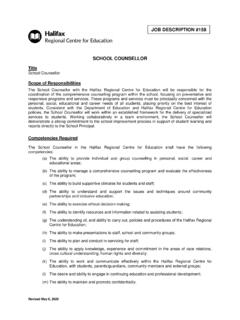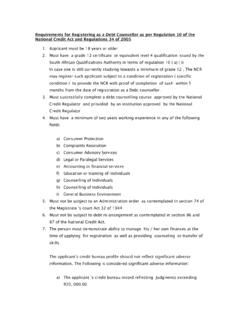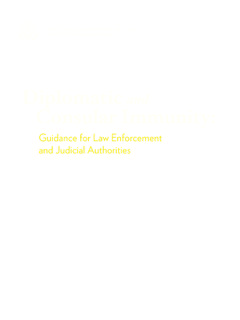Transcription of help the counsellor to relate with caring and objectivity ...
1 The Treatment of Shame by Peg Earle May 2003 What are some signs of deep, abiding shame in our clients? They may actually appear shamed- shy, hunched over, with slow, hesitant speech and little eye contact. They have mustered few defenses against the inner barrage of shame. Often, they may feel deeply exposed, unable to deny the pain, unable to protect their core identity from attack and disruption. And so they naturally withdraw, physically in reduced eye contact and hunching down, and emotionally in avoiding connection with you. Your countertransference may be experienced as frustration, impatience, even anger. You may also feel deep compassion that moves toward unproductive yearnings to rescue the client, or you may oscillate between the two poles, assuaging your guilt for the first with exaggerated caring in the second.
2 Not a good place to be! Others may present as overly defensive, wanting to control sessions with excessive verbiage and emotionalism. Power over others is a common defense against shame, as no one can shame you if you re in charge.. As a counsellor , your unproductive countertransference may take the form of resentment, anxiety, anger or active dislike. Good to know the source of the behavior, to look for shaming themes or events early in the therapeutic relationship and deal with them. 1. Shame begins to heal when it is exposed to a safe environment. The need to create a safe place is the most important factor in understanding and treating shamed persons. Though shame is experienced within the person, it is largely created and maintained through interpersonal communication. The shamed person brings into therapy many old feelings and fears.
3 He may be particularly afraid of being abandoned by the counsellor and of being renounced after he exposes his hidden self. Clients have reasons to be suspicious of your intent. They may have been shamed by family and by others on a daily basis. They bring into therapy a sense of deep misgiving. They understandably wish to protect themselves, to stay hidden. However, when the counsellor has made a strong effort to assure the client about safety, the client is likely to risk trusting. Informing the client about confidentiality laws can help to build needed trust. Also, remind clients that your office is a safe place- no one will enter, notes are confidential, and the client s needs are the focus. Once the client decides to make part of her shame visible, she is likely to feel relief, provided her disclosures are treated with respect.
4 Note that when a client does disclose shameful information, she may experience a wave of fear and renewed shame later in the evening. She may benefit from being warned of this, and offered an opportunity to call you, to receive further assurances that she will not be rejected. 2. Never shame a person feeling shame. Shamed persons need a safe place in which they can grow. Negative therapeutic responses that increase shame will reinforce a message that they are not good people. counsellors must watch for signs that they have inadvertently shamed a client by something they said or did. Such signs include the client s new wariness, narrowing of the eyes, heightened anxiety and tension in the room. counsellors must be alert to their own small, seemingly trivial behaviors that may appear as criticism, including raising their eyebrows, looking away or staring at the client, interrupting, laughing, all possibly interpreted as shaming.
5 counsellor self-discipline is key to avoid triggering shame waves in the client. 3. Attend regularly to the therapeutic relationship. Healing a shame-based identity is based on developing a caring relationship with someone trustable. The process of a trusting relationship transcends the actual shared content. In particular, the relationship with the counsellor becomes a new template, which can then be used by the client as a guide for future relationships. A counsellor who has faced her own shame will be aware of her personal needs and trigger points, and be attuned to the dynamics of shame in her clients. Good supervision and personal insight can help the counsellor to relate with caring and objectivity to highly vulnerable clients. Therapists treating shame must be comfortable with the feelings, able to acknowledge the shame before fixing it quickly or explaining it away, able to apply emotional boundaries to avoid being swept up in the client s pain.
6 The rewards to both client and counsellor are great. Clients will be seen healing their shame and transforming into people happier with self and the world. 4. Let the client see that you are human. Clients tend to idealize counsellors , to see them as powerful; and magical figures. Kohut would name this as an idealizing transference, needed by the growing child as a source of comfort, wisdom and safety. counsellors need to offer a non-anxious presence to the client, someone who can give them positive messages about themselves to counteract their shame. But they also need to see the counsellor as a human being with challenges and failures like themselves. This is the twinning need, a universal yearning to feel similar to the counsellor , to feel a part of the larger human family. Share a few of your own embarrassments, large or small, and reap the trust-enhancing rewards of vulnerability.
7 The fear of shame may be a greater problem than shame itself. The client may perpetually avoid situations that could lead to shameful feelings, generating phobias and life-choking isolation. Here is another reason to consider sharing your own incidents of shame- to model for the client that shame can be shared safely and productively. This can have freeing power, as shame usually shrinks down when exposed to the light of human caring . 5. Expect many trust tests in the therapeutic relationship. Clients may gradually disclose progressively more disgraceful episodes, each time checking carefully for signs of rejection from the counsellor . Such tests include showing up late or not at all and delaying bill payment. How will the counsellor react? Other tests may be more subtle. Will the counsellor remember to ask about homework, call the client at home when requested, not look upset when the client shows confusion or fear?
8 Clients may be compelled to pursue these tests because they cannot believe that another person could maintain interest in them or respect for them. Some tests may be consciously planned, particularly at the start of therapy. The client may make up shameful information just to see how the counsellor responds. Phony revelations should be confronted and not taken too seriously. They are understandable tests from low-trusting, deeply wounded clients. Mistakes are inevitable. No one can always be there for someone else. Note that failures in empathy can be faced and explored, so that both persons can admit the error and commit to relationship despite the failure. Here are the seeds of forgiveness and deeper trust for the future. From Kohut s work, we also see the inevitable empathic breaks as opportunities for the client to internalize self-worth and positive self-image.
9 When sufficient trust exists, the client can view these breaks as times to affirm his own belief in himself, independent of the counsellor . This self-affirmation strengthens his internal self structure, and helps lead to gradual reduction of the bonding with the counsellor . This is indeed a goal of the therapeutic relationship. A client may perceive that the counsellor has abandoned her when the client is simply projecting her own self-disgust onto the counsellor . If you sense this happening, keep reaching out in trust, and keep affirming the client s worth. Most clients will respond in time. 6. Listen carefully for hidden shame themes. Clients may hint at their shame rather than express it directly. The subtle cues include downcast eyes, hesitation in speech, or avoidance of a seemingly innocuous topic.
10 As counsellor , you may decide to bring the material out into the open, to invite the client to expose her pain and shame. However, the client may decline the offer, may even react with indignation or anger. It helps to name the feeling s shame, because the client may have no name for the overwhelming feelings. Naming it may allow a sense of relief, of finally knowing what to call the long-held uncomfortable sensations. If the client mentions past feelings of shame that she hid from you, it is best to accept that you missed them and go on to explore their dynamics. This shows that you are a fallible human being who can admit errors without being shamed yourself. It also shows your commitment to honesty above perfectionism, and your comfort level with imperfection, both valuable learning s for shamed care seekers.




